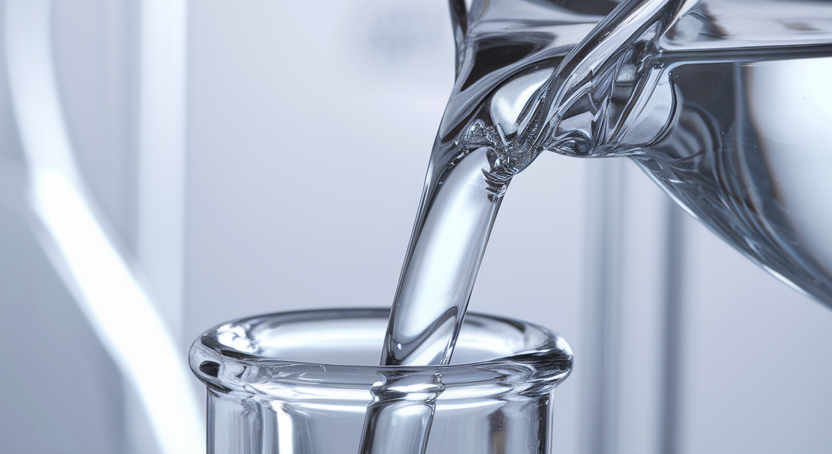Formaldehyde Releasers in Skincare: What They Are and Why They’re Controversial
By:
Kevin Chong
On
31/10/2024Reading time:
5 min
Summary:
Formaldehyde releasers are a group of preservatives used in skincare, cosmetics, and personal care products to prevent microbial contamination. Although they’re effective at keeping products safe from bacteria, mold, and yeast, formaldehyde releasers have become highly controversial due to their potential health risks. Some people avoid these preservatives entirely, while others question whether they’re truly harmful at low levels.
In this blog, we’ll explore what formaldehyde releasers are, common examples, and the reasons why they’re controversial in the skincare industry.

What Are Formaldehyde Releasers?
Formaldehyde releasers are preservatives that slowly release small amounts of formaldehyde over time. Formaldehyde is a well-known antimicrobial agent, and by releasing it gradually, formaldehyde releasers effectively prevent bacteria, fungi, and mold from growing in skincare and cosmetic products. This extends the shelf life of products, ensuring they stay safe and stable for consumers.
However, formaldehyde is also classified as a carcinogen, which has raised concerns about the safety of these preservatives, especially for people with sensitive skin or preexisting allergies.
Common Formaldehyde Releasers in Skincare and Cosmetics
Formaldehyde releasers are commonly found in a variety of personal care products, including moisturizers, shampoos, and lotions. Some of the most widely used formaldehyde-releasing preservatives include:
DMDM Hydantoin: Commonly used in shampoos and conditioners.
Imidazolidinyl Urea: Often found in lotions, creams, and deodorants.
Diazolidinyl Urea: Common in skincare products, makeup, and sunscreens.
Quaternium-15: Frequently used in moisturizers, cleansers, and hair care products.
Sodium Hydroxymethylglycinate: Used in facial cleansers and creams.
These ingredients don’t contain formaldehyde initially but release small amounts as they break down over time to provide effective antimicrobial protection.
The Controversy: Health Concerns Surrounding Formaldehyde Releasers
The controversy around formaldehyde releasers largely stems from concerns about formaldehyde’s carcinogenicity and potential to cause allergic reactions. Here’s a closer look at the primary issues:
1. Carcinogenic Potential
Formaldehyde is classified as a Group 1 carcinogen by the International Agency for Research on Cancer (IARC), meaning there’s strong evidence that it can cause cancer in humans, especially in high doses or when inhaled. While the levels released by formaldehyde releasers in skincare products are much lower than those used in industrial settings, some people worry that prolonged exposure—even at low levels—could increase cancer risk over time.
Regulatory agencies, including the U.S. Food and Drug Administration (FDA) and the European Commission, consider formaldehyde releasers safe for use in cosmetics at low concentrations. However, the concern remains, particularly for people who use multiple products containing formaldehyde releasers daily, which could potentially lead to cumulative exposure.
2. Allergic Reactions and Skin Sensitivity
Formaldehyde is known to be a skin sensitizer, meaning it can trigger allergic reactions in some people. Individuals with sensitive skin or a history of contact dermatitis are more likely to experience irritation, itching, or rashes when exposed to formaldehyde releasers.
Because of this, people with sensitive or allergy-prone skin are often advised to avoid products containing formaldehyde releasers. Some consumers also report that using formaldehyde-releasing products on broken or damaged skin can lead to increased irritation.
3. Regulatory Action and Restrictions
In some regions, formaldehyde releasers are subject to strict regulations. For example, the European Union has banned or restricted certain formaldehyde-releasing preservatives due to health concerns, particularly in products that are left on the skin for extended periods. Other countries, like Japan and Canada, also have stricter regulations on formaldehyde levels in cosmetics.
While the FDA doesn’t ban formaldehyde releasers in the United States, it does encourage manufacturers to ensure that products containing these preservatives meet safety guidelines. As consumer awareness grows, some brands are voluntarily removing formaldehyde releasers from their formulations in favor of alternative preservatives.
Should You Avoid Formaldehyde Releasers?
Whether or not to avoid formaldehyde releasers depends on your personal preferences, skin type, and tolerance for potential irritants. Here’s a summary of the pros and cons to help you make an informed decision:
Pros:
Effective Preservation: Formaldehyde releasers are highly effective in preventing microbial growth, ensuring products stay safe and stable over time.
Low Cost: These preservatives are cost-effective, making them popular in affordable skincare and cosmetic products.
Long History of Use: Formaldehyde releasers have been used in personal care products for decades, with regulatory agencies confirming their safety at low concentrations.
Cons:
Potential Carcinogenicity: While formaldehyde releasers release small amounts of formaldehyde, some consumers are concerned about the cumulative effect of long-term exposure.
Allergy and Sensitivity Risk: People with sensitive skin or allergies may experience irritation or adverse reactions when using products containing formaldehyde releasers.
Environmental Concerns: As consumers become more aware of ingredient safety, there’s growing demand for preservatives with lower environmental impact.
Formaldehyde releasers are effective preservatives that have played an essential role in skincare and cosmetics for many years. However, due to concerns about their potential to cause allergies and the long-term health risks associated with formaldehyde exposure, many consumers are opting for alternatives when possible.
If you have sensitive skin or simply want to avoid formaldehyde-based preservatives, there are numerous options on the market. Understanding the ingredients in your skincare products can help you make informed choices that prioritize both your skin’s health and your personal values.
